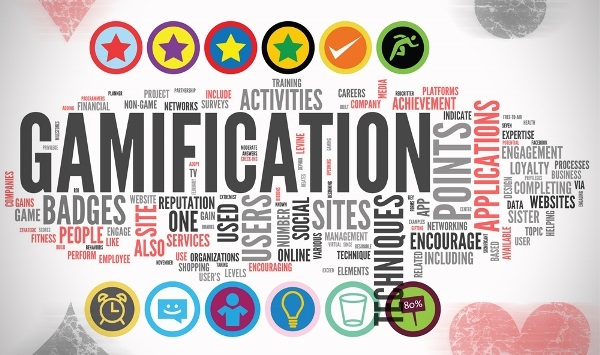I invited as a guest speaker to run an interactive session on the subject 'gamification' aimed at third year business and marketing undergraduates. Gamification is simply the process of incorporating game elements into functions which are not purely designed for gaming entertainment. In this article I focus on how this technique is used to gamify online businesses. An expanded and edited segment of my original lesson content and publish it here on 103 for the interested reader.
Games have been proven to reinforce engagement and influence consumer behavior in the business world. Social games (e.g. Angry Birds, Candy Crush) currently integrate many desirable features of online businesses, as specified in e-business literature. Games are rich content by definition, syndication is readily implemented, gaming necessitates a level of participation (especially if it has a strong social element) and games already appear on every relevant variety of electronic content access platform. It is also very easy to gather and track a wealth of gameplay data to track engagement and conversion rates once a game has been created.
Here are a couple of simple examples of game mechanics that are designed to get you to spend real money online buying products or services which are not necessarily games or game related merchandise.
Free to Play:
A website or e-community built mostly around participation in a game where the cost to play is usually nothing at all. The attraction and retention comes from the game itself being popular with the customer base. The conversion can come in many forms. Social games such as Candy Crush Saga are extremely popular and the product is in fact the game itself. Coursera is a free-to-play model of education. You can take online courses for nothing and get achievements and points for doing well in quizzes but you need to pay to be accredited.
 |
| In Hearthstone you are always exposed to the opportunity to shop, and people frequently do for that reason alone. |
Points, Levels and Badges:
By far the most common form of e-business gamification is to simply provide some sort of positive stimulus to the customer when they do something you want them to do more of. Loyalty schemes are an example of this but monetary rewards and freebies aren’t the sole driver of repeat/increased business to your website over your competitor’s sites when you use a game. The spectre of saturation means that if a competitor can easily implement your successful game for their own business then they will do so and the differential advantage over rivals is diminished to what it was before everyone implemented their games except now all business have lost money and time implementing games and offers.
 |
| Many of us bought or played inferior Xbox 360/PS3 titles for no reason other than that this felt great. |
Abstract, colourful but tangibly worthless experience points, virtual trophies and milestones are powerful on their own but the interactivity needs to be active in order to have the most impact on the consumer’s psychology. Interest rates, loyalty cards and points which are automatically earned are very passive non-interactive effects in a game.
 |
| Bottom centre. Even Snapchat has a completely arbitrary scoring system. |
Creating the idea in the mind of the player that they have ‘played’ their way to the offer and the feeling of having ‘won’ the prize of a special discount can be emotionally engaging and more difficult to refuse than if the offer was open to everyone without the need to strive for it. This sustained engagement promotes the brand, sells products and creates a social buzz about the business. All of this hinges on creating a compulsive game environment that integrates the business in an appealing way.
Next Time:
I'll talk more about how general approaches towards gamifying your online business to make your business stand out on the web. I'll also recount how business students used these lessons to come up with some fairly solid sounding pitches for gamified e-businesses.
Further 'Reading':
1. Skinner Box video by Extra Creditz: http://www.youtube.com/watch?v=tWtvrPTbQ_c
2. Foursquare Analysis.
3. How Nike uses Gamification.

No comments:
Post a Comment
Enjoy the post? Got opinions? You mad? Let's hear from you!